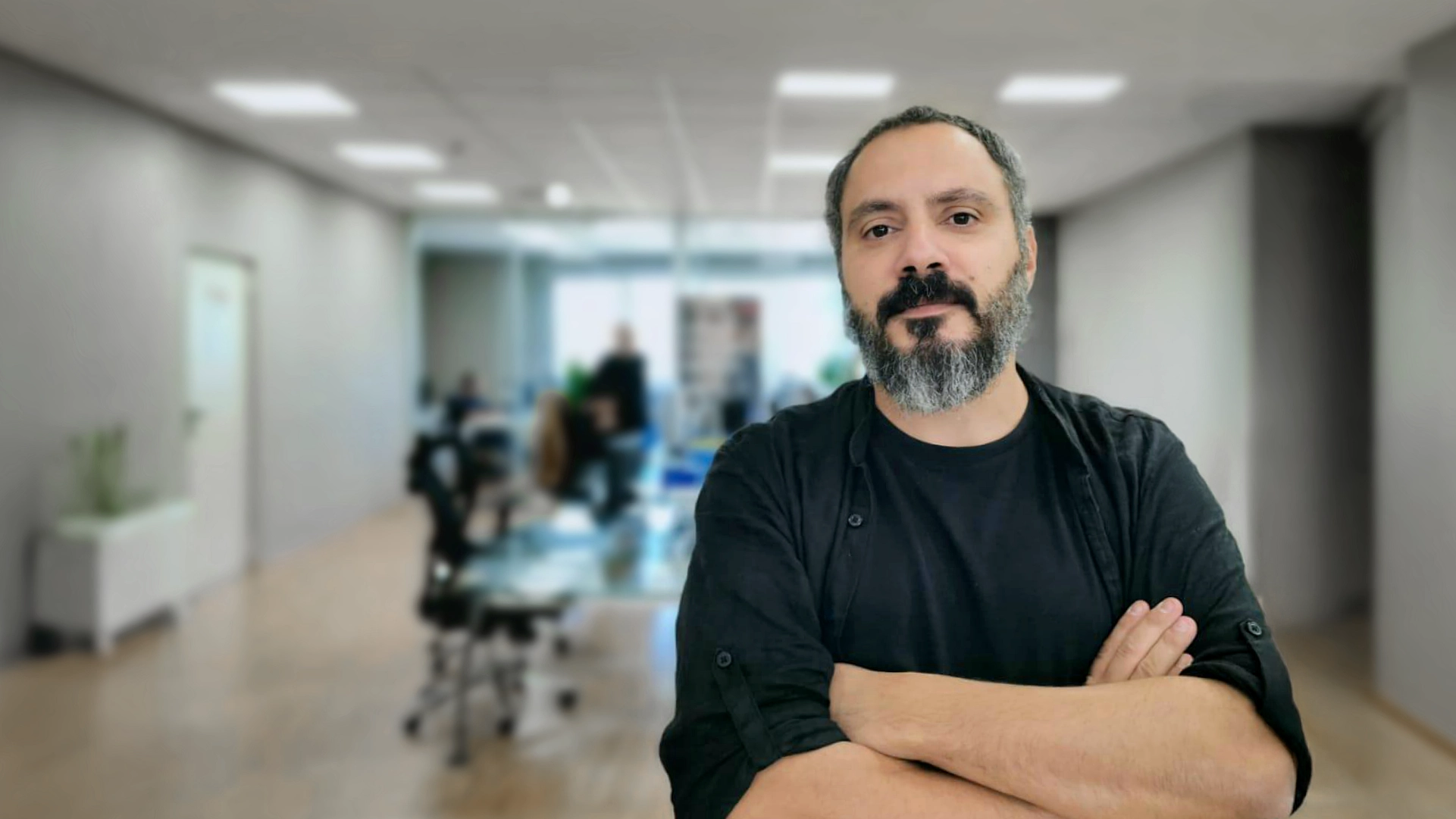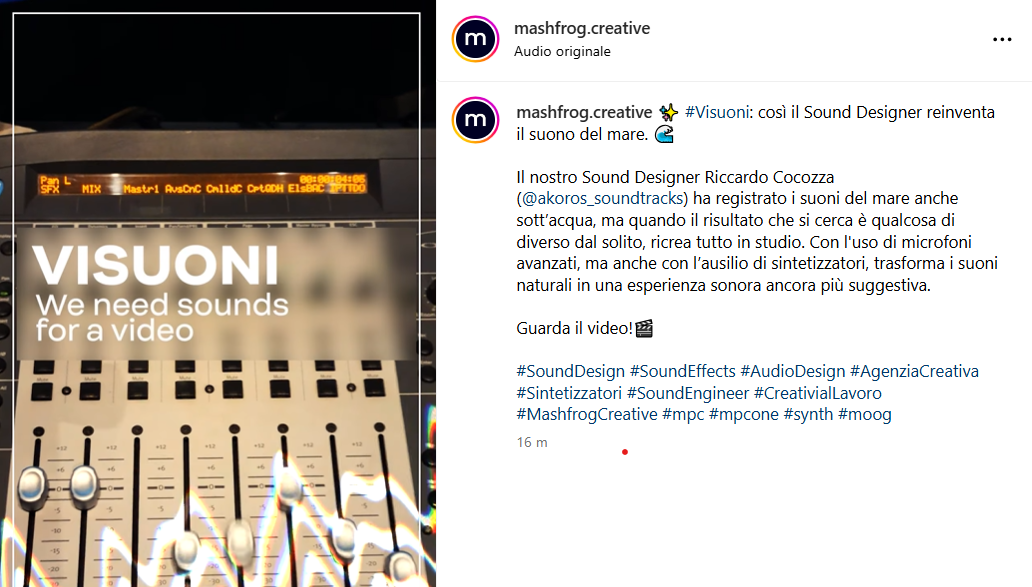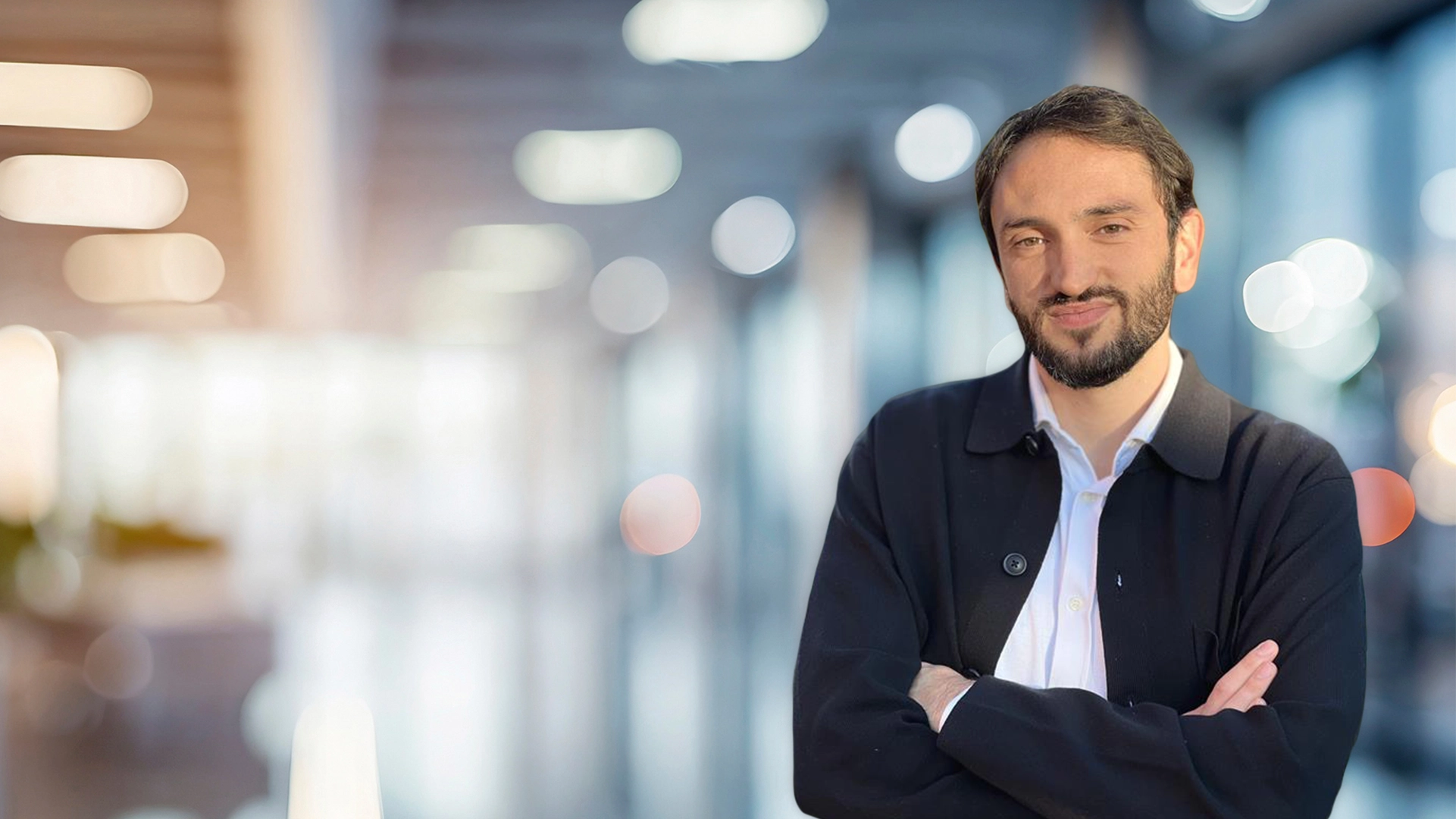The VISUONI of Riccardo, sound designer, composer (and much more)
Riccardo, a pillar of the Audio Visual Factory within Mashfrog’s Content & Creative Solutions BU, shares his career journey through music, video, theater, journalism, … and podcasts.

Riccardo Cocozza is a key figure in Mashfrog’s creative team. Today, he oversees the main audiovisual productions for the Content & Creative Solutions BU, also participating in the pre-production phase and coordinating resources allocated to projects. He has built his career by weaving a passion for music and sound storytelling into the audiovisual world. Outside Mashfrog, he engages in various personal projects, all united by his deep connection with sound as a form of expression.
What do you do at Mashfrog?
I started as a sound manager, handling all the audio aspects of our audiovisual productions. Over time, my role has evolved, and now I am also responsible for certain productions and support the coordination of the audio-video area. Part of my work takes place during pre-production, where I plan the processes, define timelines, working methods, and help assemble the team in close collaboration with Davide Lemma, Head of Area Audio Visual Factory. It’s a much broader role than when I started, allowing me to have a comprehensive view of the entire production process and to focus not only on the creative aspect but also on the organizational and strategic ones.
What is your educational background?
I attended classical high school, which gave me a solid cultural foundation. My dream was to become a journalist, but due to various circumstances, I had to leave university and start working. Why did I become a sound technician? Because I wanted to be a rock star! Joking aside, my passion for music has been the guiding thread of my life. Over time, I moved professionally from the music world (which I never abandoned) to the audiovisual field, and I fell hopelessly in love with it. I studied at the Saint Louis College of Music in Rome, taking a sound technician training course, after which I became a mixing engineer and sound designer and began working on various productions.
What other projects are you involved in outside of Mashfrog?
Outside of my work at Mashfrog, I’m involved in a number of different projects. First and foremost, I continue to pursue my primary passion: music. I play in a band that I formed as a teenager, which has never stopped working. In the past, I was part of an experimental theater company with which we toured several shows across Europe. More recently, I’ve developed a passion for creating soundtracks and sound design for feature and short films, two areas generally kept separate, but I like to blend them, turning noises into sounds and musical notes. Then there’s the world of podcasts: I collaborate with investigative journalists to produce content that combines storytelling and audio, and I’ve had the pleasure of writing and producing several podcasts. One of these is Nieto 133, the first one where I signed not only as a sound designer and sound technician but also as an author. This project was a merging of my three passions: journalism, music, and audio.
What attracts you to sound over video?
Sound has a much stronger evocative power than images. When you look at an image, your brain tends to objectively recognize what you see: if you see a tree, you know it’s a tree. However, with sound, the experience is much more subjective: if you hear a sound related to a tree, you may not immediately recognize it, and your brain interprets it based on your personal, even unconscious, experience. This makes sound an incredibly evocative medium, capable of creating profound and intimate sensations. I like to say that sound has a more direct connection with emotions than images: it can convey moods, feelings, and sensations that are hard to achieve with just video. This is what I tried to explain with VISUONI – We need sounds for a video, a series of clips created to showcase my work, the first episode of which can be seen here:
What is your relationship with Artificial Intelligence?
I have a love-hate relationship with it. On one hand, I consider it a fascinating and very useful technological advancement for speeding up some tasks. On the other hand, I’m concerned about the risk of creative flattening. One of the things I love about sound is its artisanal component, which gives great freedom to those who work with it. With artificial intelligence, I fear that audiences may get used to products lacking originality and all looking the same. Therefore, I hope AI will remain just a working tool to be used responsibly and that there will still be room for human error, which is often the starting point for creating something truly unique and memorable.
Finally, what do you enjoy about your work at Mashfrog?
Definitely the ability to experiment. Each project is different and allows me to use creativity in always new ways. I often find myself inventing audio solutions at clients’ requests, and this aspect of creative problem solving excites me. Another aspect I love about production is the chance to meet many people and get to know their more human side. Additionally, my work involves a lot of travel, visiting places I would never have known otherwise. Like when I went to Africa for the Demopatia project, an app-documentary on the value of democracy, created in collaboration with ZeroCalcare. Or when I climbed to 2,200 meters with deep snow alongside Maurizio Zanolla (known as Manolo). These experiences (sometimes real adventures!) enrich me personally and are a constant source of inspiration for new projects.



